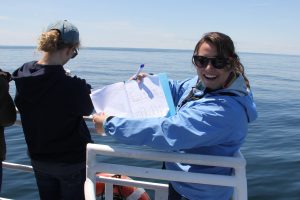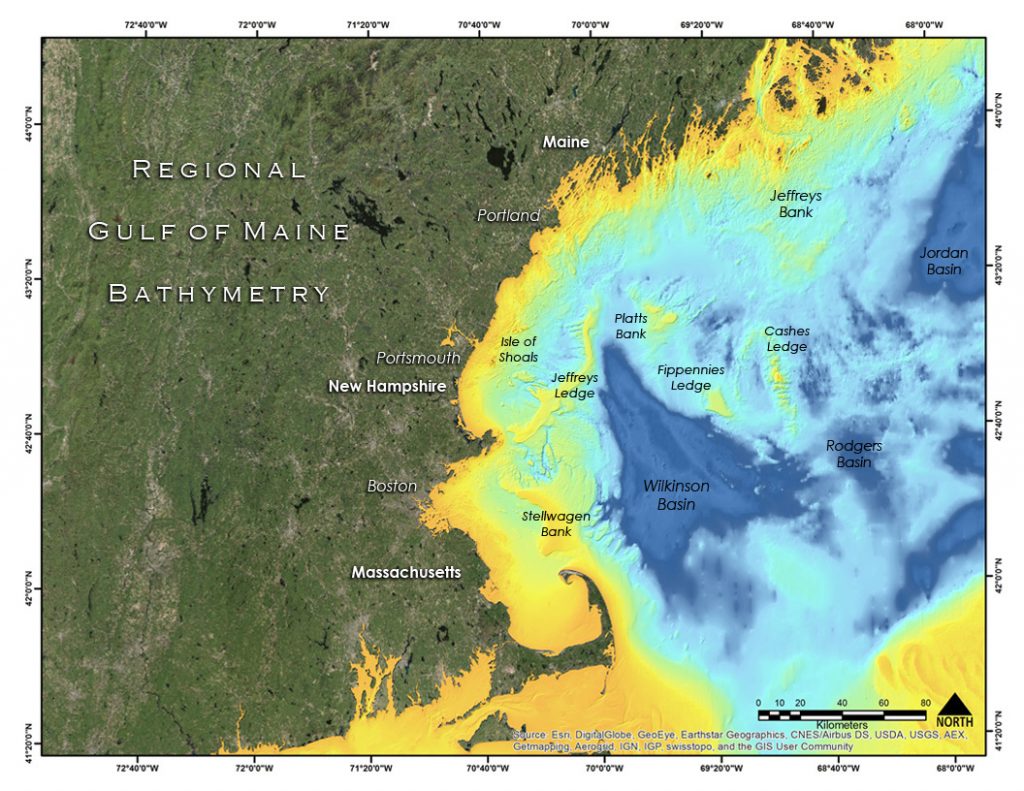Learn more about whales by watching our recent virtual program
Since 1996, we’ve studied whales in the Gulf of Maine, focusing particularly on large baleen whales (fin and humpback whales). Our research is conducted from commercial whale watching vessels, which provide a platform from which we can educate thousands of people each year while collecting unique data on the whales in our area and human impacts on these animals.

Whale Research
From May-October, we collect observational data on marine mammals and other sightings from local whale watch boats. Our research focuses primarily on and around Jeffreys Ledge which is a productive area in the Gulf of Maine that is home to many species of fish and whales. We are the only organization to collect consistent data on the marine mammals inhabiting Jeffreys Ledge during the summer, and have been doing so since 1996. Between 2014-2018, we had also worked in the Stellwagen Bank National Marine Sanctuary, which provided us the opportunity to collect additional data and compare sightings and habitat usage between these two very different habitats.
Current Research Projects
- Identifying and cataloging local fin and humpback whales
- Studying the distribution of whales, basking sharks and ocean sunfish in the Gulf of Maine
- Investigating long-term trends in distribution and social groups among marine mammals
- Involving boaters and fishermen in reporting whale sightings and marine debris. Have a boat? Join us!
Why Study Whales?
Whales are important species in the Gulf of Maine, and their health can serve as indicators of the health of the Gulf of Maine overall. The data we collect is unique and can provide valuable information that can help resource managers develop policies that ensure the health of whales and the Gulf of Maine as a whole.
Interested in getting involved? Check out our volunteer or internship program, or meet up with us at one of our events!
Recent Research Reports and Presentations
2020 Research Report and Summary
Presentation: A Whale of a Year: 2021 Season Highlights (January 2022)

About Jeffreys Ledge
Jeffreys Ledge is a 33-mile long rocky ledge which stretches from Cape Ann, Massachusetts to just southeast of Cape Elizabeth, Maine. Water depth on the ledge ranges from about 140-240 feet, while the water depth around the ledge drops off quickly to 250-600 feet. As the water depth decreases on the edge of the ledge, upwelling occurs which brings nutrients toward the surface, creating a productive habitat.
